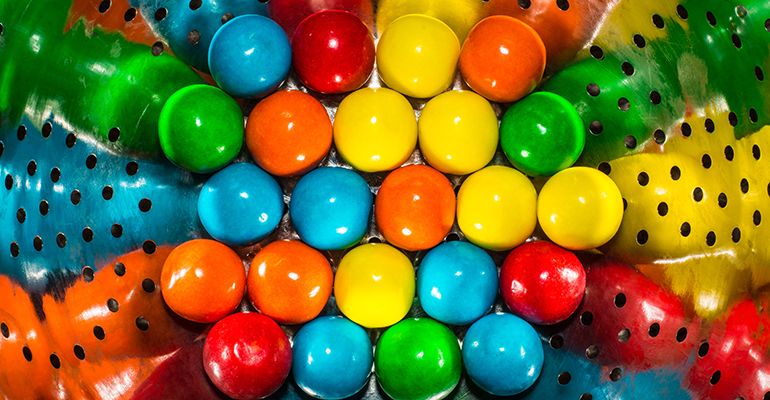News
Ferrara focuses on core growth opportunities as it shutters gum brands
5 Feb 2024In the US, declining sales of chewing gum and bubble gum has seen a number of key players exiting the category, prompting a shift towards better growth opportunities in other areas of the confectionery space.
Testimony to this is Ferrara Candy Company’s decision to quietly begin exiting the gum category at the end of 2022. Confirming this move, the company recently said that it would sunset sales of its Super Bubble brand, first established in 1946, and its Fruit Stripes brand, which first hit the US shelves in the 1960s.

In a statement to Ingredients Network, the company said that while Fruit Stripes can still be purchased at select retailers nationwide, the decision to sunset the brands had not been taken lightly, adding that that it “considered many factors before coming to this decision, including consumer preferences, and purchasing patterns – and overall brand trends”.
Focusing on its core brands
Looking to the future, Ferrara says it is focusing on its iconic core brands, including traditional sugar candy brands like Fun Dip, Gobstopper, Jujyfruits, Fire Ball, Pixy Stix, and Chuckles. The company also said it would continue to fine tune its e-commerce strategy, driven by its recent debut on Amazon.
Ferrara’s fastest growing brand is Nerds, which has seen sales grow from $50m to $500m in five years, a success that has been partly driven by the launch of Nerds Gummy Cluster. The company says it is also riding its hopes of further boosting the Nerds brand by sponsoring college football’s Big Game.
Ferrara’s decision also reflects the fact that it became a part of the Ferrero group when it was acquired by the Italian confectionary player in 2017, a move that shifted the portfolio towards candy and chocolate, putting its gum brands in the shadows.
The pandemic and economic turbulence upended gum sales
"A range of factors have influenced the decline in chewing gum sales,” Lynn Dornblaser, director of innovation and insights at Mintel. “They include economic factors, pandemic-related changes in consumer behavior, shifts in work patterns, health and dietary concerns, and demographic shifts. Therefore, a contraction of companies in the [gum] market is not surprising, as companies seek to optimize their portfolios.”
“In terms of chewing gum, we not only have seen declining sales but also declining new product introductions, across countries, since before the pandemic. Product introductions have shown a pattern of decline since 2007, with the greatest declines over time coming in Europe and Asia,” Dornblaser added.
While the pandemic significantly impacted gum sales, particularly because of mask-wearing and a reduction in socialisation, Dornblaser also noted that that recent economic turbulence has impacted impulse purchases, a key factor in gum sales.
Declining gum sales have been a familiar story worldwide for the past ten years. But in the US, the cultural home of gum, this decline has been even more pronounced. Underscoring this, Wrigley closed a major gum manufacturing plant in the US in 2016, and at the end of 2022 Mondelez sold off its gum business, which included the Dentyne and Trident brands that were sold in the US, Canada and Europe.
 © iStock/Steven Giles
© iStock/Steven Giles
Other areas of confectionery look stronger
The US National Confectioners Association’s annual State of Treating report showed that in 2023 sales of gum have continued a decade-long downward trajectory, with gum sales coming in at $3.6bn, down by 8.8% compared to the figure in 2019. Comparing volume sales saw an even more dramatic decline over the period, with the number of gum sticks sold in 2023 coming in at 6.8bn, a decline of 22% compared to 2019.
“In terms of chewing gum, we not only have seen declining sales but also declining new product introductions, across countries, since before the pandemic. Product introductions have shown a pattern of decline since 2007, with the greatest declines over time coming in Europe and Asia,” said Dornblaser.
Overall, global gum sales continue to grow though, which is counteracting the downward trajectory in the US market to a degree. This means that global gum sales are expected to grow 3.2% CAGR 2024 – 2032, according to market intelligence provider IMARC Group.
However, this forecast is still relatively subdued compared to the market growth rate for the confectionery industry. According to Statista, Revenue for the global confectionery market will amount to US$1.19tn in 2024, with the market expected to grow annually by 5.8% CAGR 2024 – 2028.
“Even post-pandemic, the recovery has been slow due to the changing patterns of returning to work and social activities,” said DornBlaser. “Although many consumers have gone back to work outside the home, that paradigm of five days a week in the office - for office workers - seems to be forever changed."